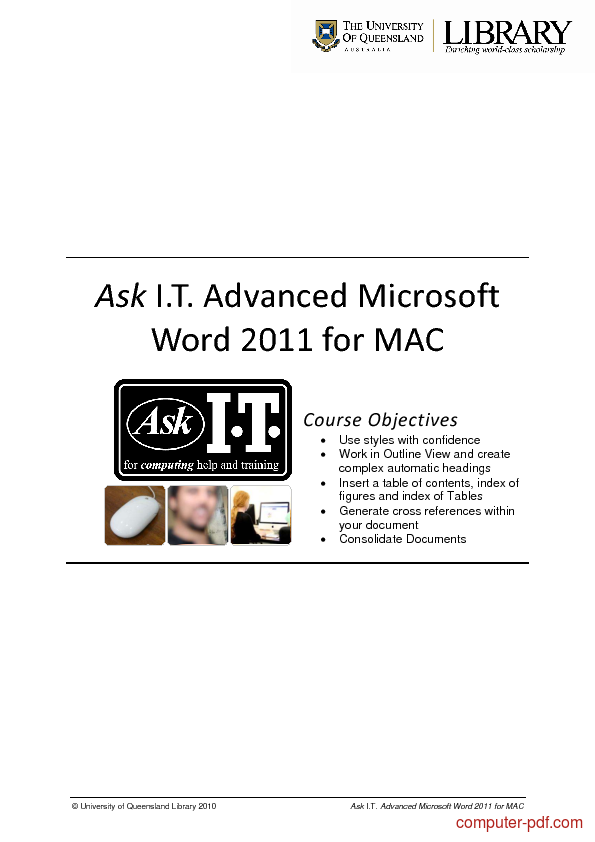

Best of all: I can drag a heading in the Document Map, and the heading, and all the paragraphs of text "below" it, will move.(Except they're not called Find and Thumbnails any more either but, like the Document Map they don't have new names, so using the old names seems sensible.) It now shares the new "Navigation Pane" with a panel for Find and one for Thumbnails. Note that in Word 2010 you must right-click a heading. See Figure 2.įigure 4: The Document Map in Word 2010 showing the shortcut menu when you right-click a heading.
#TABLE OF CONTENTS WORD FOR MAC 2011 PLUS#
You can expand or collapse individual headings by clicking on the plus and minus signs next to the headings.Right-click in a blank area of the Document Map, and choose how many levels you want to display. You can determine how many levels of headings the Document Map displays.
#TABLE OF CONTENTS WORD FOR MAC 2011 HOW TO#
How to control the number of levels that Document Map displays In Figure 2, I can see that the cursor is within the section "Sea transport". As you move around your document, the Document Map will highlight the current heading.įor example, in Figure 1, I can see that the cursor is within the section with the heading "Balloons". You can see a page of text, but it's hard to know where you are in the document.ĭocument Map is a good way to solve this problem. If you have a really big document, it's sometimes easy to get "lost". How to use the Document Map to see where you are in a document That gives you a really fast way to navigate around your document. If you click on a heading in the Document Map, the cursor will jump to that heading. How to use the Document Map to move around your document quickly (And if you're used to using that, in Word 2007 and Word 2010, you can reinstate the Styles combobox to the Quick Access Toolbar.)įrom the Styles combo box, choose Heading 1 for your main headings, Heading 2 for sub-headings and Heading 3 for minor headings, and so on.

In Word 2003 and earlier versions, the easiest way is probably to use the Styles combobox on the toolbar.

In Word 2007 and Word 2010, on the Home tab, in the Styles gallery, click the thumbnail for the heading style you want to apply. There are many ways to apply the heading styles. To get Document Map to display useful headings, apply the built-in heading styles to the headings in your document. How to get Document Map to display something useful You get to choose whether to show just the highest-level headings, or lower-level headings as well. That is, it shows all the headings in your document. What it shows you, however, can be very useful. It just sits there on the left of your screen. Strictly speaking, it doesn't do anything. You'll see the Document Map on the left of your Word screen. (We lost the old keyboard shortcut in Word 2007, but it was reinstated for Word 2010!!)

Figure 1: The three parts to the Navigation Pane in Word 2010


 0 kommentar(er)
0 kommentar(er)
